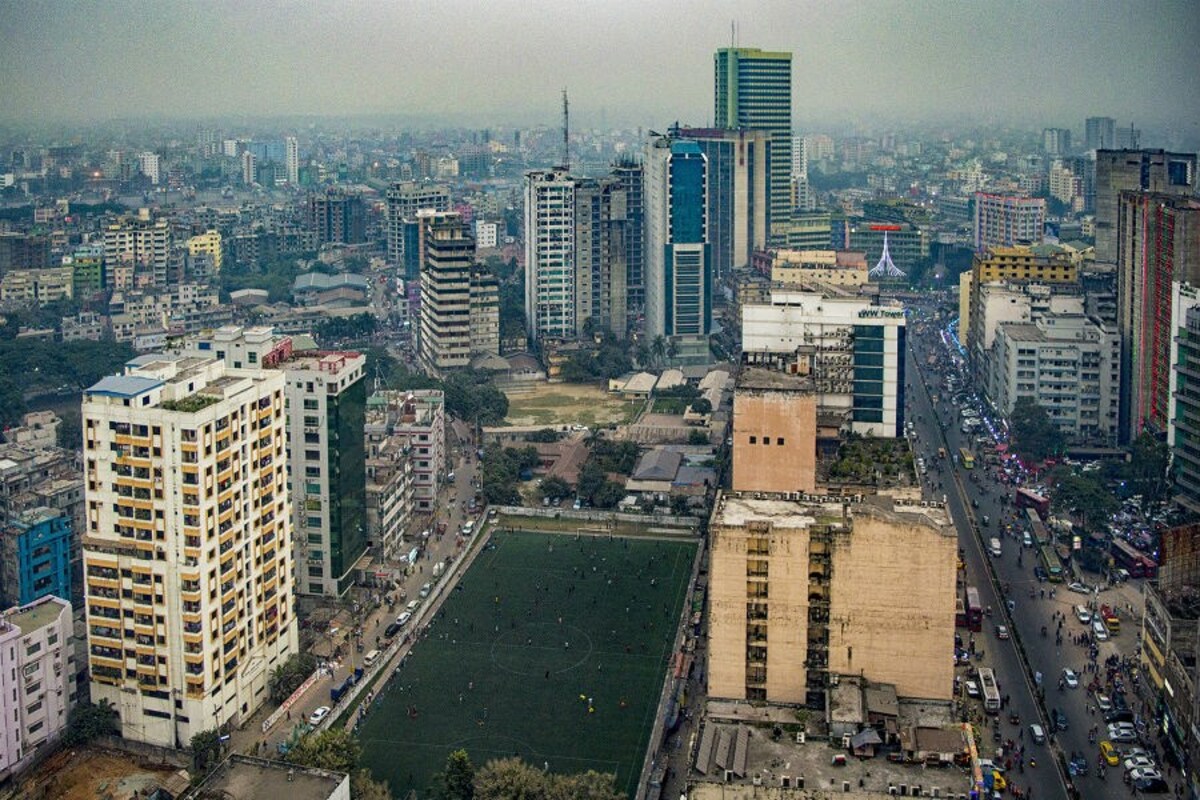Dhaka is not only the capital of Bangladesh but also one of the most densely populated cities in the world, with a rich history, unique culture and complex infrastructure. Over the centuries, the city has undergone many transformations, adapting to new challenges while preserving its heritage. It is a place where traditional crafts, Islamic architecture, river transport and the intense rhythm of a megacity coexist. You might not know how diverse and fascinating Dhaka truly is. Here are some of the most interesting and informative facts about this South Asian metropolis.
- Dhaka is the capital of Bangladesh and has a metropolitan population of over 20 million people, making it one of the largest cities in the world by population. It continues to grow rapidly due to urbanisation and internal migration. Every year, more than 300,000 people move to Dhaka from rural areas.
- The city is located on the banks of the Buriganga River, which has played a vital role in trade and transportation for centuries. River transport is still widely used, carrying thousands of passengers daily. Many residents live and work along the riverbanks.
- In the Middle Ages, Dhaka was renowned as a centre for producing muslin, an extremely fine fabric that was exported globally. This nearly transparent textile was so delicate it was said to pass through a ring. Muslin from Dhaka was highly valued in Europe, India and the Ottoman Empire.
- The city’s history dates back to the 13th century, but Dhaka gained special importance in the 17th century during the Mughal Empire. At that time, it became the capital of Bengal and an important trade port. Many mosques, forts and palaces were built, some of which still stand today.
- One of the most famous landmarks in Dhaka is the Lalbagh Fort, an unfinished Mughal-era citadel. Construction began in 1678 but was halted after the death of the governor’s daughter. Today, it serves as a popular tourist attraction and cultural venue.
- Dhaka is home to the National Museum of Bangladesh, which preserves artefacts ranging from prehistoric times to the modern era. Its collections include sculptures, ancient manuscripts, ethnographic items and artworks. The museum plays a major role in the country’s cultural education.
- The city is known for its many mosques, with the Star Mosque (Tara Masjid) being particularly iconic. Its walls are decorated with blue and white star-shaped mosaic tiles, giving it a distinct charm. The mosque is a favourite spot for both locals and tourists.
- Dhaka is often called the rickshaw capital of the world. It is estimated that between 500,000 and one million cycle rickshaws operate in the city. This mode of transport remains affordable and widely used by the population.
- Despite economic challenges, Dhaka is a major industrial and financial hub in South Asia. It hosts hundreds of textile factories that export goods to numerous countries around the globe. Bangladesh is among the world’s largest garment producers, and Dhaka plays a crucial role in this sector.
- The city frequently experiences flooding caused by monsoon rains and inadequate drainage infrastructure. During the rainy season, many areas become submerged, disrupting transportation and daily life. Authorities are working on infrastructure improvements, but the problems remain significant.
- Dhaka is home to several higher education institutions, most notably the University of Dhaka. Established in 1921, it was the first modern university in East Bengal. Its graduates have played key roles in the nation’s scientific, cultural and political development.
- The city is a centre for religious, cultural and political activity. It was the starting point of Bangladesh’s independence movement, which led to the 1971 Liberation War. Memorials such as the National Martyrs’ Monument commemorate these historic events.
- Dhaka features one of the largest shopping malls in Asia, Bashundhara City. This multi-storey complex includes hundreds of shops, cinemas, restaurants and office spaces. It is not only a commercial centre but also a popular recreational spot for city residents.
- The city has one of the highest population densities in the world, creating major challenges in transport, healthcare and environmental management. Many neighbourhoods are overcrowded, and air pollution levels frequently exceed safe limits. Still, Dhaka continues to grow and modernise.
- Dhaka is the heart of the Bengali film industry, known as Dhallywood. Most of the country’s film studios are based here, producing dozens of movies each year. The film industry is an essential part of the city’s cultural identity.
- There are several green spaces across Dhaka, including parks and botanical gardens, with Ramna Park being the most prominent. It is a popular place for walking, exercising and celebrating national holidays. In a city as crowded as Dhaka, such natural areas are especially valuable.
These interesting facts about Dhaka offer a deeper insight into its culture, daily life and historical significance. The city blends tradition and modernity, facing challenges while striving for progress. Dhaka is a city of contrasts, full of energy and rooted in its national identity. You might not have known many of these details, but each of them reveals how truly unique this capital city is.





